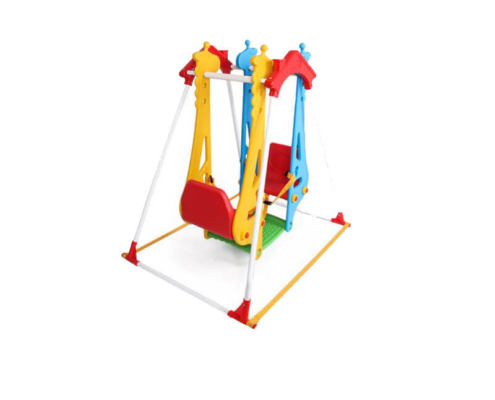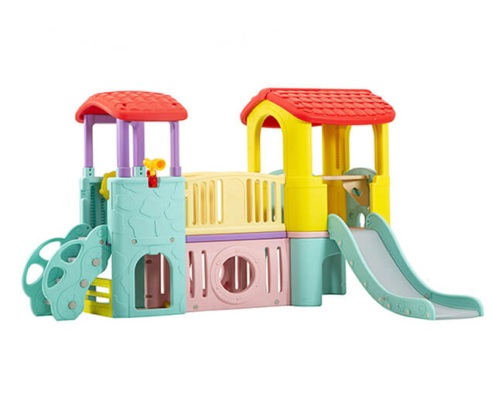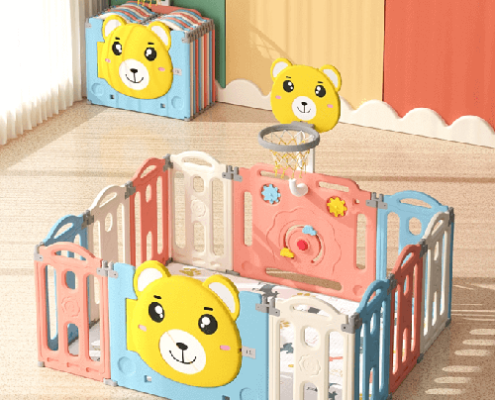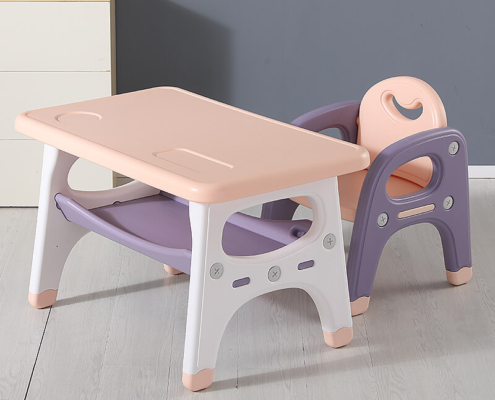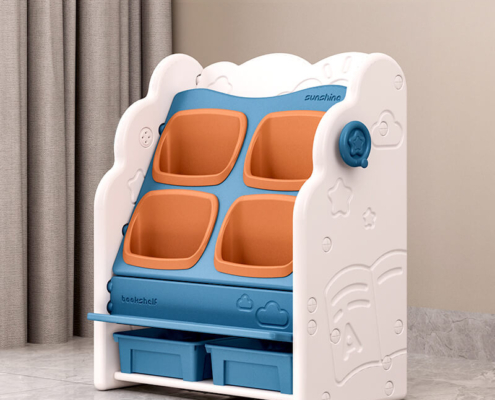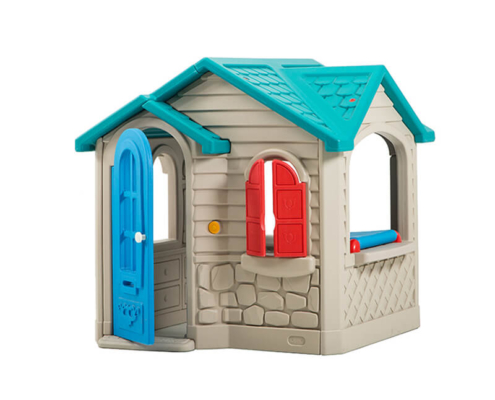Toy placement skills in infant education activities
Toys are tools that reflect the nature of infants and young children, an important way for infants and young children to understand the world, and the material basis for infants and young children to play. Toys play their close partners in the growth of infants and young children. They move their muscles and bones by playing with toys, understand the world in operation, gain experience in exploration, and learn to communicate in common games with their peers. The most important thing is that in the process of playing, infants and young children can get psychological satisfaction, pleasant emotions, and a successful experience. Infants and young children of different ages have different development levels and abilities, and have different needs for toys; and infants and young children of different ages need different stimulations to promote the coordination of their basic movements, develop the flexibility of their fingers, and promote the development of intelligence.
First, the significance of toys to the development of infants and young children
1. Let infants and young children gain cognition
Infants and young children can respond to external things when they are just born, and in the later growth process, under the influence of rich environmental stimulation and educational effects, infants and young children can use toys to see, listen, touch, play with, and promote the development of children. Cognition develops rapidly.
2. Promote emotional pleasure in infants and young children
Appropriate toys can increase the emotional experience of infants and young children, promote the generation of happy emotions in infants and young children, and obtain physical and mental pleasure, to give full play to the mission of stimulating the happy emotions and happy emotions of infants and young children.
3. Promote the development of infant language
The language development of infants and young children is more dependent on the environment and conditions than any other development. Therefore, teachers and educators should choose toys that can stimulate the expression of infants and young children, so that infants and young children can practice speaking and enrich their interaction with toys. vocabulary.
4. Promote all-round physical and mental development of infants and young children
Appropriate toys can also help infants and young children improve their ability to understand things, stimulate infants and young children to germinate new ideas, promote infants and young children to build muscle control and strength development, enrich infants and young children’s imagination, and improve infants and young children’s problem-solving ability. , and learn how to communicate and cooperate with small partners in the game.
Second, the characteristics of infant toys
Toys placed by adults on infants and young children must not only be safe and healthy but also need to have the following characteristics.
1. Various types: meet the needs of infants and young children in different developmental periods and different needs.
2. Multi-texture: guide infants and young children to perceive items of different materials and textures.
3. Multi-color: stimulate desire and attract infants and young children to participate in activities.
4. Multi-function: Dig a variety of ways to play, infiltrate a variety of goals, and reflect the multi-play and multi-purpose of one thing.

Third, the placement and placement of infant toys
1. Types of toys: The overall type of toys should be less, and the number of toys of the same type should be more, and the types can be gradually increased with the proficiency of infants and young children.
2. Categorized placement: Help infants and young children place toys by themselves in a variety of ways to cultivate a sense of order.
3. Rotate replacement: After some time, you can put away the familiar toys for infants and young children, and change other toys while ensuring the same type of toys, increase the novelty of infants and young children, and improve their interest in operating toys.
4. Pick and place by yourself: You can put non-hazardous toys in a place where infants and young children can get and put them back, to strengthen the cultivation of infants and young children’s independence and good behavior.
4. Toys that infants and young children like
It is the nature of infants and young children to like to play. The first thing that infants and young children do when they wake up every day and the things they think have not been done before going to bed are games. Games have always accompanied the growth of infants and young children. Infants and young children start punching and kicking on the bed from two or three months, and play alone; when they are five or six months old, they will grab things when they see them, and they will put them in their mouths when they catch them; when they are seven or eight months old, they like to crawl everywhere to find them. Things; when I was one or two years old, I liked to touch here, move there, walk, run, do this, and do that. In the eyes of adults, it is almost exhausting, but infants and young children are not tired of it.

The following is a summary of the games and toys that infants and toddlers like to play at each age.
1. Before 1 year old
In the first year after the baby is born, you can provide him with brightly colored items, such as soft plush toys, toys with sounds (such as wind chimes, music boxes, etc.), large blocks, softballs, push-pull toys, and nesting toys etc… Adults can play house, hide-and-seek, and other games with the baby, and give him a warm playing experience in the process of playing the baby; talk to him, sing to him, amuse him, and encourage him to watch and listen, suck, grasping, fondle, and can continue to attract his interest; let the infant snuggle on the lap, read a story to him, and give soft stimulation such as music, sound, color, rocking, etc. At this time, parents are the biggest toys for infants and young children.
2. 1 to 2 years old
After 1 year old, infants and young children like to imitate the people and things around them. When they see other infants and young children’s toys, they also want them. They will compete with their friends for toys. They like to touch things, and they want to move and touch everything. , so potentially dangerous items should be kept in a safe place by adults. At this time, infants and young children like toys that can be tapped, push-pull toys, toys that play with sand and water, 4-5 simple puzzle toys, building blocks, dolls, etc.; they also like to smear, and can provide some art supplies, Such as oil pastels, coloring books, drawing boards, etc. for infants and young children to doodle. Infants and young children are inseparable from books throughout their growth and development stages. Adults should read more to infants and young children to cultivate their interest and habit of reading and develop their language, thinking, and imagination.
3. 2 to 3 years old
After the age of 2, infants and young children are more curious, active, and interested in everything. They like to dress up as familiar characters from their lives and imitate the behavior of each character. At this time, you can prepare a “prop box” for infants and young children, so that they can imitate their roles and better understand the people and things around them. He also likes to put together toys, wear beads, blow bubbles, etc. Anything that can be manipulated can become toys for infants and young children. 2 to 3 years old is the initial stage of infants and young children’s self-service ability. Adults can let infants and young children do what they can do by letting them go. They have valued themselves, so they will happily do things with adults. At this time, you should also create more opportunities for children to play with other children and develop their social skills.
5. Use living materials to make toys
For the growth of infants and young children, it is not a finished toy. Infants and young children often prefer toys that are transformed from daily necessities. Therefore, adults should understand the psychology of infants and young children and should make full use of waste items in the family as toys, or transform them into interesting toys, which is not only economical, but also assists infants and young children in sports training and ability development, and cultivates them well. emotional and social behavior.
1. Pictures
The sources of pictures are very wide, and many advertising pictures are brightly colored and beautifully printed, which can be used to transform into good game materials, let infants and young children understand daily objects, and cut them into puzzles of various difficulties for infants and young children to splicing.
2. Box
Boxes can be large or small, ranging from refrigerators, washing machine boxes, medicines, toothpaste boxes, etc. These large boxes can be used as sports toys for infants and young children to drill, climb, etc.; the medium ones can be used as building blocks for infants and young children to practice height; the small ones can be used as item boxes for infants and young children to practice “throwing” fall”.
The shape, color, material, etc. of some boxes are good objects of understanding, and can also be combined with other materials to make many toys for infants and young children to play with.
3. Bottles and jars
A variety of common beverage bottles, snack cans, etc., the large ones can be used as obstacles, the small ones can be held in the hand, and various empty bottles can be used to play matching games, such as sticking various geometric figures on the bottle, or It is a different color or a different word, and then paste the corresponding graphics, color or word on the bottle cap, so that the infants and young children can be matched and properly trained.
After washing all kinds of empty bottles, put them into different materials such as soybeans, pebbles, sand, water, etc., tighten the bottle caps, shake the bottle to make a sound, and change the materials in the bottle in time according to the interests of infants and young children.
4. Fabric
The soft fabric is stitched, which can be made into a variety of lightweight toys without harming infants and young children.
You can cut the fabric into a circle and sew the two pieces together to make a soft flying butterfly, which is light and does not fly high, which is very suitable for infants and young children to play with; you can also use a soft cloth to make small cloth bags and put them in separate bags. Rice, peanuts, mung beans, sand, etc., let infants and young children touch the outside of the cloth bag to feel the particle size of the items in the cloth bag, etc.; you can also use handkerchiefs, similar or similar patterns in the cloth to cut and paste into pictures or cloth books for Babies look through.
5. Rope
The soft rope is also a favorite toy for infants and young children, but it is necessary to pay attention to safety so as not to make the rope strangle the infant and young child.
It can be braided with rope, wool, packaging rope, cloth strips, etc., and then form various animals, flowers, plants, and trees, so that infants and young children can talk while watching.
10 kinds of toys to help train your baby’s hand movements
Rings, clatter sticks: These toys can be easily grasped by the baby, and at the same time they can make sounds, which are easy to arouse the baby’s interest. Especially suitable for 2 to 4 months old baby to play.
Building blocks: bright colors and different shapes, can be stacked and disassembled at will to change into many patterns. It is best to make the blocks smaller so that the baby can grasp and operate. Babies over 6 months love to play.
Picture books: Books are also toys for babies. From grasping a lot of books to turning pages page by page, you can see the whole process of the development of the fine motor of the baby’s small hands. Babies over 6 months can read books after they can sit.
Balls: Small, rolling, colored balls are especially interesting for babies. Babies can grab, push, and pat with their hands. Babies who can crawl over 7 months can play.
Rings and Cups: You can play alone or put them together in different order of sizes. For 1 to 2-year-old babies, this is a good toy that can change endlessly.
Plasticine: Babies can knead, pinch, squeeze, and press at will to make whatever they like. This is one of the indispensable toys for exercising the fine motor skills of little fingers, and almost all babies like it. Babies around 1 year old can play.
Inlay Box: You need to get the shape right before you can put the parts in. This allows your baby to recognize different shapes while moving their little hands. It is especially suitable for children aged 1 and a half to 2 years old to play.
Beading: Passing a string through a small hole requires not only good hand-eye coordination but also concentration. Babies can play around 2 years old.
Paintbrush: From 1-year-old to paint a little, to 3-year-old can draw a decent picture. Grasp the pen, hold the pen, and move the pen, it is a good exercise for the fingers and wrists.
Building Blocks: Like building blocks, building blocks come in bright colors and different shapes. During the operation, the small muscles of the baby’s hands can be well exercised. Suitable for children over 3 years old to play.


